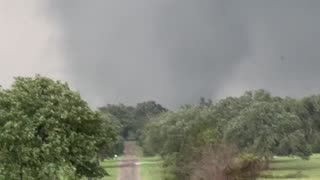CRAZY RAW VIDEO Hurricane Katrina Roof Top Flooding St Bernard Parish LA Aug 2005
CRAZY RAW VIDEO Hurricane Katrina roof top flooding St Bernard LA
Raw Video of flooding beyond roof tops in St. Bernard Parish Louisiana DURING Katrina
Aug 29, 2005
Hurricane Katrina was a devastating and deadly Category 5 Atlantic hurricane that caused 1,836 fatalities and damages estimated between $97.4 billion to $145.5 billion in late August 2005, particularly in the city of New Orleans and its surrounding area. At the time, it was the costliest tropical cyclone on record, later tied by Hurricane Harvey in 2017. Katrina was the twelfth tropical cyclone, the fifth hurricane, and the third major hurricane of the 2005 Atlantic hurricane season. It was also the fourth-most intense Atlantic hurricane to make landfall in the contiguous United States, gauged by barometric pressure
Katrina began on August 23, 2005, with the merger of a tropical wave and the remnants of Tropical Depression Ten. Early the following day, the depression intensified into a tropical storm and headed generally westward toward Florida. On August 25, two hours before making landfall at Hallandale Beach, it strengthened into a hurricane. After briefly weakening to tropical storm strength over southern Florida, Katrina entered the Gulf of Mexico on August 26 and rapidly intensified. The storm strengthened into a Category 5 hurricane over the warm waters of the Gulf of Mexico before weakening to a high-end Category 3 hurricane at its second landfall on August 29 over southeast Louisiana and Mississippi.
The largest loss of life in Hurricane Katrina was due to flooding caused by engineering flaws in the flood protection system, particularly the levee around the city of New Orleans. Eventually, 80% of the city, as well as large areas in neighboring parishes, were flooded for weeks. The flooding destroyed most of New Orleans's transportation and communication facilities, leaving tens of thousands of people who did not evacuate the city prior to landfall with little access to food, shelter, and other basic necessities. The disaster in New Orleans prompted a massive national and international response effort, including federal, local, and private rescue operations to evacuate those displaced from the city in the following weeks. After the storm, multiple investigations concluded that the U.S. Army Corps of Engineers, which had designed and built the region's levees decades earlier, was responsible for the failure of the flood-control systems.[6] However, federal courts later ruled that the Corps could not be held financially liable due to sovereign immunity in the Flood Control Act of 1928
-
 1:13
1:13
Earth Wind and Fire
8 days agoStrong tornado from close range south of Kosse Texas debris in the air
2721 -
 15:35
15:35
Space Ice
20 hours ago'The Beekeeper' Exposes The Dark, Gritty, & Violent World Of Apiculture - Best Movie Ever
35.7K20 -
 3:29:53
3:29:53
SonnyFaz
1 day agoEric Kelly Trains Sonny FULL STREAM
38.2K10 -
 9:32
9:32
China Uncensored
15 hours agoBad Things Are Happening In Taiwan...
32.9K23 -
 38:24
38:24
Tucker Carlson
12 hours agoTucker Carlson and Donald Trump Jr. Respond to the Trump Verdict
152K539 -
 2:01:47
2:01:47
Fresh and Fit
13 hours agoOne Hit Wonder 🤡 Kicked Off For THIS...
212K474 -
 34:19
34:19
Alexis Wilkins
19 hours agoBetween the Headlines with Alexis Wilkins: The Verdict and More
57K31 -
 1:11:21
1:11:21
Kim Iversen
19 hours agoWW3?!? Is The West Secretly Behind Another Color Revolution Aimed At Toppling Russia? | Biden Maniacally Bombs Yemen and Russia
101K98 -
 1:36:46
1:36:46
Roseanne Barr
17 hours ago $73.82 earnedFor Love of Country with Tulsi Gabbard | The Roseanne Barr Podcast #50
108K182 -
 33:59
33:59
TudorDixon
23 hours agoA Story of Sacrifice and Service with Joe Kent | The Tudor Dixon Podcast
41.4K4